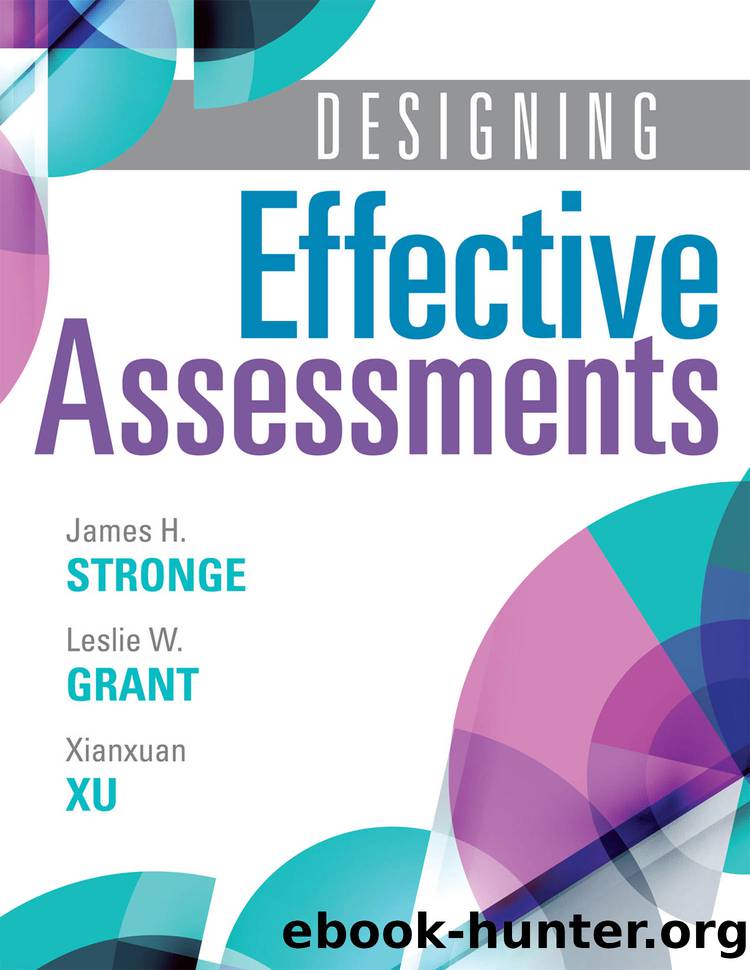Designing Effective Assessments by Strong James H.;Grant Leslie W.;Xu Xianxuan;

Author:Strong, James H.;Grant, Leslie W.;Xu, Xianxuan;
Language: eng
Format: epub
Publisher: Solution Tree
Published: 2017-08-15T00:00:00+00:00
Determine the Number and Nature of the Components to Grade
When determining which component to grade, teachers should be cautious about two extremes. One is to base the grade for an entire semester on one or two assignments, which are a very small sample of studentsâ actual learning and have limited validity in representing studentsâ achievement. Under-grading, or not having enough graded assessments or assignments, has the potential to communicate an inaccurate portrait of student learning or progress. The other extreme is to evaluate every learning activity and make every assessment count as part of the grading record. In other words, teachers need to be selective. Student work that is ongoing and is assessed only to determine studentsâ progress does not necessarily need to constitute a gradebook entry. A learning activity should be assigned a grade only after the opportunity to learn is complete. Additionally, studentsâ final grades should encompass the summative assessment activities, excluding the assessment activities that are implemented for formative purposes (for example, to inform instructional modifications in the middle of a unit).
Download
This site does not store any files on its server. We only index and link to content provided by other sites. Please contact the content providers to delete copyright contents if any and email us, we'll remove relevant links or contents immediately.
| Administration | Assessment |
| Educational Psychology | Experimental Methods |
| History | Language Experience Approach |
| Philosophy & Social Aspects | Reform & Policy |
| Research |
The Art of Coaching Workbook by Elena Aguilar(50161)
Trainspotting by Irvine Welsh(21070)
Twilight of the Idols With the Antichrist and Ecce Homo by Friedrich Nietzsche(18316)
Fangirl by Rainbow Rowell(8812)
Periodization Training for Sports by Tudor Bompa(7939)
Change Your Questions, Change Your Life by Marilee Adams(7399)
This Is How You Lose Her by Junot Diaz(6470)
Asking the Right Questions: A Guide to Critical Thinking by M. Neil Browne & Stuart M. Keeley(5378)
Grit by Angela Duckworth(5316)
Red Sparrow by Jason Matthews(5218)
Paper Towns by Green John(4820)
Room 212 by Kate Stewart(4760)
Ken Follett - World without end by Ken Follett(4461)
The Sports Rules Book by Human Kinetics(4090)
Housekeeping by Marilynne Robinson(4078)
Double Down (Diary of a Wimpy Kid Book 11) by Jeff Kinney(3950)
Papillon (English) by Henri Charrière(3937)
The Motorcycle Diaries by Ernesto Che Guevara(3798)
Exercise Technique Manual for Resistance Training by National Strength & Conditioning Association(3794)
